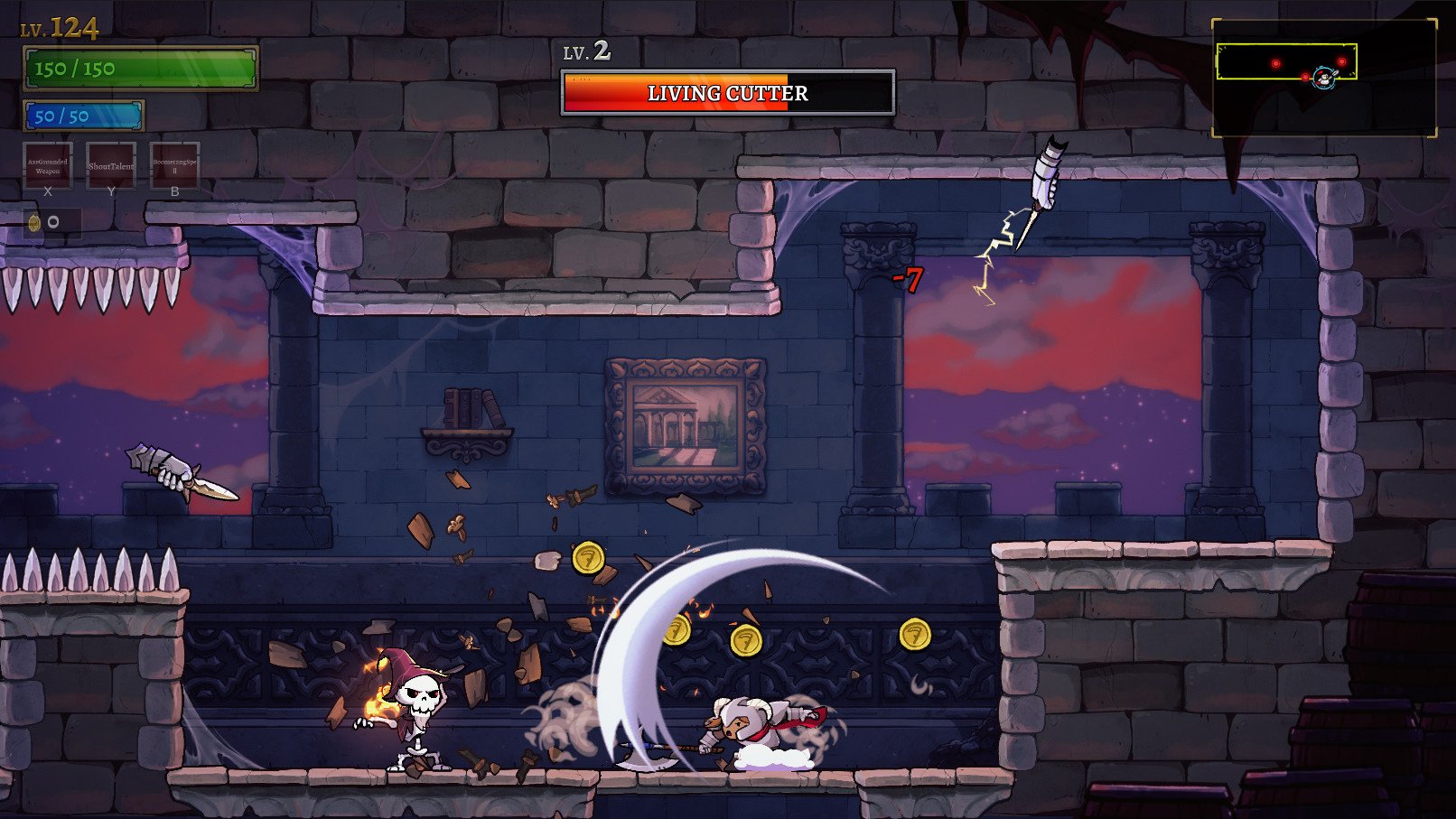
I adore each class identity, even if I found about half of the choices hardly viable for my playstyle. The Pirate can fly around in an airship shooting cannonballs at the foes in its sight. Rangers can aim and fire a bow and create leafy canopy platforms to fire from in the air. Knights comes equipped with a big sword and can block attacks with a shield, while Mages sling fireballs from their wand at a distance and can use two spells instead of one. This time around, each heir’s class determines which weapon type they use and an additional ability they have at their disposal. However, class identities are more straightforward and have been greatly expanded upon from Rogue Legacy. By the late game, the castle building menu is cluttered with redundant slots and ends up being a far messier system than it needs to be.
Rogue legacy upgrade#
There are also far too many repetitive upgrade nodes featuring the same stat boosts as others that set you back an even greater amount of gold. As more ranks of an upgrade are purchased, the price for the next tier increases for the same flat stat increase, offering diminishing returns on character improvements as the cost to upgrade skyrockets. I’m glad the persistent upgrades are back, but I do have some problems with the system overall.
Rogue legacy full#
In town, you can craft new gear – which also offers stat bonuses and more with a full set of armor – before forfeiting the remainder of your cash and heading off on a new adventure. Skills can be purchased after each run, adding permanent stat increases to every character you play as strength, intellect, health, and more can be increased along with unlocking more classes to play as. With that gold, you can build up the bloodline’s castle, and the port town below it. These modifiers deliver more than enough wealth to make up for the extra effort given. Any traits that make the game more difficult result in a significant modifier, allowing for more gold to be accrued throughout that lifetime. Someone with unfortunate vertigo flips the world upside-down for that run. Another may be colorblind, shifting the presentation to greyscale. One fighter might be a have the characteristic of a giant, towering over their peers. It adds a lot of depth to the rogue-lite concept. I love all the different variations of warriors these traits create, and that you’re rewarded for choosing someone with “bad” genetics. The game is easy to pick up and get used to and, more importantly, easy to return to after some time away.Īt the start of a run, you choose an heir to your bloodline with specific hereditary traits that make that character’s generation their own for better or worse. The controls are tight and precise – making jumping and attacking curse-free affairs. There’s also a nifty spin kick used to bounce off enemies or dangerous objects that’s critical to master to make it far into the dicey dungeons.


To add some more tools to the combat repertoire, each heir has a special class ability and a random spell tied to separate face buttons. As an heir to a long and somewhat tragic bloodline, you run, jump, and attack using the weapon of that character’s inherent class. While this lack of deviation from the original’s template proves to be a theme throughout Rogue Legacy 2, there are a lot of changes that add up to a bigger, better version of the original in almost every way.Įverything may be rendered in 3D this time around, but Rogue Legacy 2 retains its 2D platforming roots.

Despite switching from 2D sprites to a 3D rendered world, it veers close to the previous game’s aesthetic. In fact, at first glance, you’d be hard-pressed to see what’s changed from 2013’s Rogue Legacy to Cellar Door Games’ sequel. Rogue Legacy 2 doesn’t make the biggest initial splash.


 0 kommentar(er)
0 kommentar(er)
